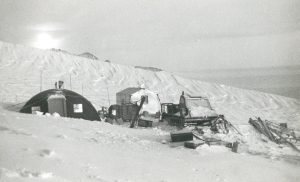 Established in May 1969 at 72°57’54.18″ South, -3°47’47.25 West, Borga Base was a semi-permanent scientific research base operated by South Africa in Antarctica (1969-1976) located 350 kilometers (220 mi) south of South Africa’s primary Antarctic research station SANAE I
Established in May 1969 at 72°57’54.18″ South, -3°47’47.25 West, Borga Base was a semi-permanent scientific research base operated by South Africa in Antarctica (1969-1976) located 350 kilometers (220 mi) south of South Africa’s primary Antarctic research station SANAE I
Borga Base was created with the support of Belgian aircraft during the International Geophisical Year and was inaugurated in 1969. Its main building was a Parcoll hut, a long hut with a semicircular frame resembling half a cylinder.
In the years of its operation (the main research activities of Borga Base were geological surveying and weather monitoring), expedition teams would attempt the traverse from SANAE to Borga Base using specialized tractors, though they were not always successful. In 1969, mechanic Gordon Mackie was the first casualty of South African Antarctic research when he fell to his death on the traverse between the two bases. In 1970, mechanical and weather difficulties forced the team to abandon their attempt to reach Borga. In 1971, mechanical issues once again prevented the team from reaching Borga Base so they created , another semi-permanent station (Grunehogna Base WAP ZAF-NEW), using a prefabricated hut.
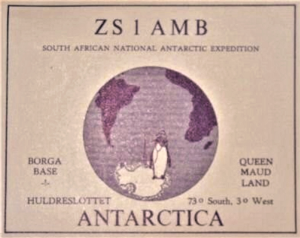 WAP thanks immensely our friend Oliver F6EPN who, with the pubblication of the old QSL of ZS1AMB active from Borga Base in 1969, allowed us to complete the story of this Base been on the air, thanks to Chris Muir ZS6BCT (radio operator of the Borga Team expedition),
WAP thanks immensely our friend Oliver F6EPN who, with the pubblication of the old QSL of ZS1AMB active from Borga Base in 1969, allowed us to complete the story of this Base been on the air, thanks to Chris Muir ZS6BCT (radio operator of the Borga Team expedition), 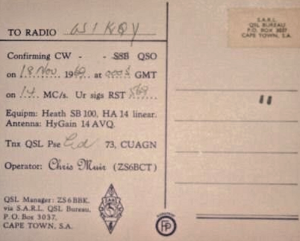
South Africa’s Borga Base operate by ZS1AMB Nov. 1969. (QSL via ZS6BBK) is listed on WAP-WADA Directory as WAP ZAF-Ø8.
.
TNX Olivier F6EPN for his great help
ANTARCTIC News Bulletin, pubblished by New Zealand Antarctic Society March, 1970 at page 387-388 reports:
Good use was made of South Africa’s new Borga Base, erected last year with the aid of Belgian aircraft during the joint summer expedition. The new base enables geologists to explore new areas and makes it possible to undertake research over a far greater area.
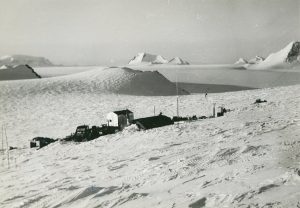 Borga Base, a 4-man wintering-over station, was established during May 1969 near Huldreslottet Nunatak (72° 50’S, 3° 48’W), some 350 km. due south of SANAE. The detailed geological investigation of the Kirwan Escarpment, particularly the Tunga region, was completed during the post-winter field-season and Antarctic history was made when the hitherto virgin region of the Escarpment between 5° and 7°W, was mapped during mid-summer 1969/70. The field parties progressed up to the south easternmost continuation of the Escarpment and could clearly see in the distance Heimefrontfjella where British geologists mapped in previous years. The inland base has proved to be a great success and Anton Aucamp and Leon Wolmarans (geologists), Chris Muir (radio operator) and Wilfred Hodsdon (leader and veteran of three expeditions) survived the wintering over extremely well.
Borga Base, a 4-man wintering-over station, was established during May 1969 near Huldreslottet Nunatak (72° 50’S, 3° 48’W), some 350 km. due south of SANAE. The detailed geological investigation of the Kirwan Escarpment, particularly the Tunga region, was completed during the post-winter field-season and Antarctic history was made when the hitherto virgin region of the Escarpment between 5° and 7°W, was mapped during mid-summer 1969/70. The field parties progressed up to the south easternmost continuation of the Escarpment and could clearly see in the distance Heimefrontfjella where British geologists mapped in previous years. The inland base has proved to be a great success and Anton Aucamp and Leon Wolmarans (geologists), Chris Muir (radio operator) and Wilfred Hodsdon (leader and veteran of three expeditions) survived the wintering over extremely well.
11th Expedition geologists and support personnel have already taken over the Base for the 1970-season, during which it is hoped to complete the detailed mapping of the Basement rocks exposed along the Escarpment and in the Juletoppane (72° 30’S, 06°W).
The 11th Expedition will also establish a safe route across the Pencksokka from Borga Base on to the Polar Plateau. This will be used as the first stage of a 600-km over snow traverse from SANAE via Borga up to the northernmost turning point of the U.S. South Pole-Queen Maud Land Traverse. It is anticipated that this geophysical-glaciological traverse will take place after the winter of 1971.
COASTAL SURVEY
Captain K. T. McNish, master M.V. R.S.A., repeated his 1964-radar survey of more than 350 km. of ice front in the King Haakon VII Sea. Significant changes in the configuration of the ice front have been recorded during the intervening five years. The most important change is the calving of nearly two-thirds (ca 1800km2) of Trolltunga, the more than 120 km. long ice tongue along the Greenwich Meridian. This event is undoubtedly of major glaciological and cartographic significance. Off-shore echo soundings have also indicated that the break-away point of the continental shelf lies at approximately 700 fathoms and that the continental slope is a very steep (1:4), linear feature. It was planned to extend the coastal survey during the present relief but close pack ice has thus far prevented any further penetration to the East.
TRAGEDY
1969 ended tragically with the unex-pected death of Gordon Mackie, Mechanic of SANAE 10. Three expedition members, including the late Mr. Mackie, left SANAE for Borga Base to collect a broken down tractor and make magnetic observations. On December 3, 1969, having completed the observations for the day, Mr. Mackie went to look at a windscoop, fell into it and was killed instantly. He is the first member of a South African team to be killed in the Antarctic. The burial will take place at East London, Cape Province after the RSA has returned from the Antarctic.
NEW TEAM
SANAE II, comprising 18 members, left Cape Town on January 10. 1970, for the Antarctic. The journey was uneventful and the transfer of the four expedition members to Borga Base, approximately 2 km. southeast of SANAE. The existing base at SANAE was erected at the beginning of 1962 and will be replaced by a new base at the beginning of 1971. A new power shack was also erected by the PWD team.
BUILDINGS
Planning the new main base is progressing well, and it is hoped to have it erected during January-February, 1971.  The old buildings, erected in 1962, arc now 35 feet under snow and ice, and are still withstanding all stresses and strains.
The old buildings, erected in 1962, arc now 35 feet under snow and ice, and are still withstanding all stresses and strains.
References: Vol.5, No.9, March 1970 page 387-388
Mmymtmmx* a N E W S B U L L E T I N – DocsLib
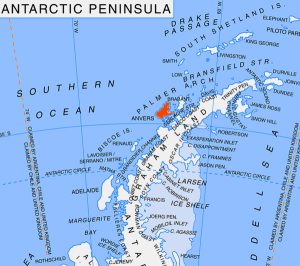 The larval health of an Antarctic cold-water coral species may be resistant to warming water temperatures, a University of Maine study finds, bringing new hope for the climate change resilience of deep-sea ecosystems in the Western Antarctic Peninsula.
The larval health of an Antarctic cold-water coral species may be resistant to warming water temperatures, a University of Maine study finds, bringing new hope for the climate change resilience of deep-sea ecosystems in the Western Antarctic Peninsula. “Although their habitat is now changing faster than other places around the world, most marine animals in the Southern Ocean are thought to have a limited capacity to adapt to environmental shifts,” says Julia Johnstone, principal author of the study. “Especially during the larval stage, when developmental processes are organizing and laying the foundations for key life-long functions like prey capture and growth, those environmental changes can have an outsize impact.”
“Although their habitat is now changing faster than other places around the world, most marine animals in the Southern Ocean are thought to have a limited capacity to adapt to environmental shifts,” says Julia Johnstone, principal author of the study. “Especially during the larval stage, when developmental processes are organizing and laying the foundations for key life-long functions like prey capture and growth, those environmental changes can have an outsize impact.”
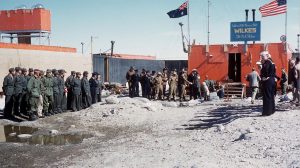 From Jan 1957 through 6 February 1959 Wilkes was a Multinational Base (
From Jan 1957 through 6 February 1959 Wilkes was a Multinational Base (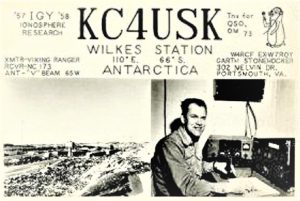 Wilkes was seen to be strategically located because of its proximity to the south magnetic pole. Under an agreement with the United States, Australia was permitted to use the station stores and supplies that remained, on condition that nothing was removed and that Australia through reported annually on consumption of stores and supplies.
Wilkes was seen to be strategically located because of its proximity to the south magnetic pole. Under an agreement with the United States, Australia was permitted to use the station stores and supplies that remained, on condition that nothing was removed and that Australia through reported annually on consumption of stores and supplies.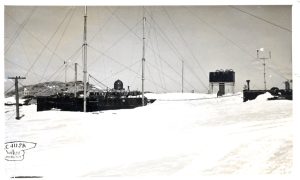 A plan to realise a new station Casey Repstat (Replacement station) was developed on the other side of the bay. Repstat was commissioned in 1969 and Wilkes was closed.
A plan to realise a new station Casey Repstat (Replacement station) was developed on the other side of the bay. Repstat was commissioned in 1969 and Wilkes was closed.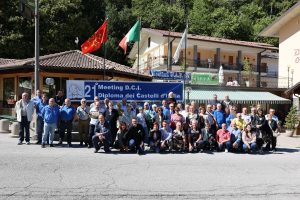 Mondovì Section of the Italian Radio Amateurs Association, with the contribution of the Cassa di Risparmio di Savigliano Bank and with the patronage of the Presidency of the Regional Council of Piedmont, the Province of Cuneo, the City of Mondovì, the Municipality of Roccaforte Mondovì, the A.R.I. National and C.R.P.V.A. has organized for the 21st consecutive year, an important international event aimed at highlighting the aspects related to Amateur Radio and the extraordinary historical, artistic and naturalistic heritage of the Italian territory.
Mondovì Section of the Italian Radio Amateurs Association, with the contribution of the Cassa di Risparmio di Savigliano Bank and with the patronage of the Presidency of the Regional Council of Piedmont, the Province of Cuneo, the City of Mondovì, the Municipality of Roccaforte Mondovì, the A.R.I. National and C.R.P.V.A. has organized for the 21st consecutive year, an important international event aimed at highlighting the aspects related to Amateur Radio and the extraordinary historical, artistic and naturalistic heritage of the Italian territory.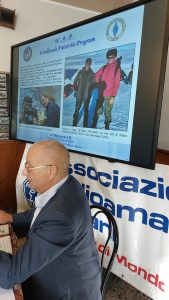 joining the meeting held in the frame of the beautiful , Borgata Norea of Roccaforte Mondovì, where participants have been booking at the Hotel Restaurant Commercio, in where, all the works did take place.
joining the meeting held in the frame of the beautiful , Borgata Norea of Roccaforte Mondovì, where participants have been booking at the Hotel Restaurant Commercio, in where, all the works did take place.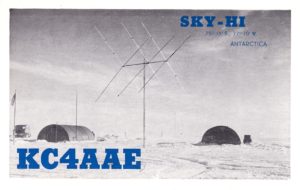 WAP
WAP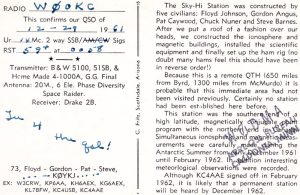 Certainly no station had been established here before. This station was the southern end of a high latitude, magnetically conjugate point program with the Northern end in Canada. Simultaneous ionospheric and magnetic measurements were carefully made during the Antarctic Summer from early December 1961 until February 1962. In addition, interesting meteorological observations were recorded.
Certainly no station had been established here before. This station was the southern end of a high latitude, magnetically conjugate point program with the Northern end in Canada. Simultaneous ionospheric and magnetic measurements were carefully made during the Antarctic Summer from early December 1961 until February 1962. In addition, interesting meteorological observations were recorded. It was first became operational on February 24, 1984 which was later brought under the Department of Post at Goa on January 26, 1988.
It was first became operational on February 24, 1984 which was later brought under the Department of Post at Goa on January 26, 1988.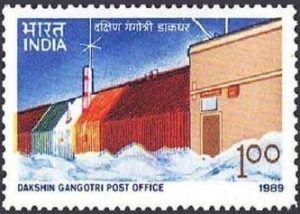
 This month, the prestigious
This month, the prestigious  N2OO (
N2OO (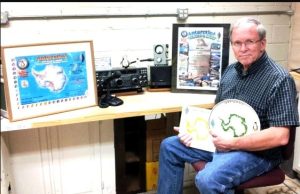 This takes years and years of continuous monitoring, setting skeds, following Antarctic expeditions and scientific seasons, all with only one goal; to work a new one. Bases, camps, huts, refuges, and rare scientific sites are the rewards of ample research done by these Antarctic DX hounds. Currently, there are many different Antarctic DX programs and awards available from Argentina, Australia, France, Italy, Poland, Russia, and Ukraine. Two sought-after Antarctic awards are sponsored by the
This takes years and years of continuous monitoring, setting skeds, following Antarctic expeditions and scientific seasons, all with only one goal; to work a new one. Bases, camps, huts, refuges, and rare scientific sites are the rewards of ample research done by these Antarctic DX hounds. Currently, there are many different Antarctic DX programs and awards available from Argentina, Australia, France, Italy, Poland, Russia, and Ukraine. Two sought-after Antarctic awards are sponsored by the  Established in May 1969 at 72°57’54.18″ South, -3°47’47.25 West, Borga Base was a semi-permanent scientific research base operated by South Africa in Antarctica (1969-1976) located 350 kilometers (220 mi) south of South Africa’s primary Antarctic research station SANAE I
Established in May 1969 at 72°57’54.18″ South, -3°47’47.25 West, Borga Base was a semi-permanent scientific research base operated by South Africa in Antarctica (1969-1976) located 350 kilometers (220 mi) south of South Africa’s primary Antarctic research station SANAE I WAP
WAP
 Borga Base, a 4-man wintering-over station, was established during May 1969 near Huldreslottet Nunatak (72° 50’S, 3° 48’W), some 350 km. due south of SANAE. The detailed geological investigation of the Kirwan Escarpment, particularly the Tunga region, was completed during the post-winter field-season and Antarctic history was made when the hitherto virgin region of the Escarpment between 5° and 7°W, was mapped during mid-summer 1969/70. The field parties progressed up to the south easternmost continuation of the Escarpment and could clearly see in the distance Heimefrontfjella where British geologists mapped in previous years. The inland base has proved to be a great success and Anton Aucamp and Leon Wolmarans (geologists),
Borga Base, a 4-man wintering-over station, was established during May 1969 near Huldreslottet Nunatak (72° 50’S, 3° 48’W), some 350 km. due south of SANAE. The detailed geological investigation of the Kirwan Escarpment, particularly the Tunga region, was completed during the post-winter field-season and Antarctic history was made when the hitherto virgin region of the Escarpment between 5° and 7°W, was mapped during mid-summer 1969/70. The field parties progressed up to the south easternmost continuation of the Escarpment and could clearly see in the distance Heimefrontfjella where British geologists mapped in previous years. The inland base has proved to be a great success and Anton Aucamp and Leon Wolmarans (geologists),  The old buildings, erected in 1962, arc now 35 feet under snow and ice, and are still withstanding all stresses and strains.
The old buildings, erected in 1962, arc now 35 feet under snow and ice, and are still withstanding all stresses and strains.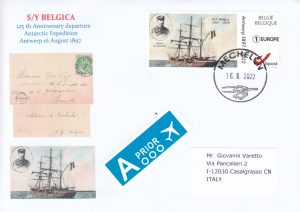 Monday August 16 , 897. The port of Antwerp is filled with people. The National Anthem is being played, canon shots of joy are heard across the River. The Belgica leaves the harbour, setting sail to Antarctica. Other than a lost whaler, there has never been a soul nearby…
Monday August 16 , 897. The port of Antwerp is filled with people. The National Anthem is being played, canon shots of joy are heard across the River. The Belgica leaves the harbour, setting sail to Antarctica. Other than a lost whaler, there has never been a soul nearby… The Belgian Antarctic Expedition of 1897–1899 was the first expedition to winter in the Antarctic region. Led by Adrien de Gerlache de Gomery aboard the R/V Belgica, it was the first Belgian Antarctic expedition and is considered the first expedition of the Heroic Age of Antarctic Exploration. Among its members were Frederick Cook and Roald Amundsen, explorers who would later attempt the respective conquests of the North and South Poles.
The Belgian Antarctic Expedition of 1897–1899 was the first expedition to winter in the Antarctic region. Led by Adrien de Gerlache de Gomery aboard the R/V Belgica, it was the first Belgian Antarctic expedition and is considered the first expedition of the Heroic Age of Antarctic Exploration. Among its members were Frederick Cook and Roald Amundsen, explorers who would later attempt the respective conquests of the North and South Poles.